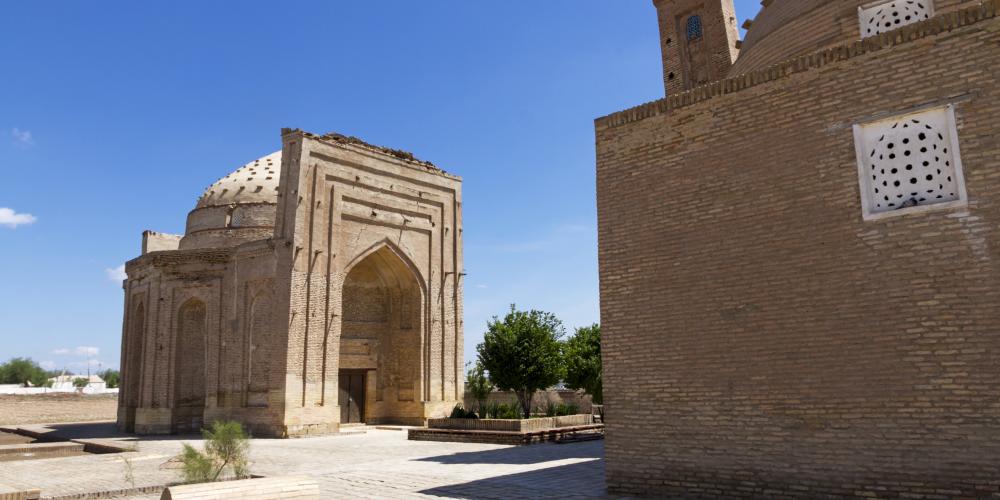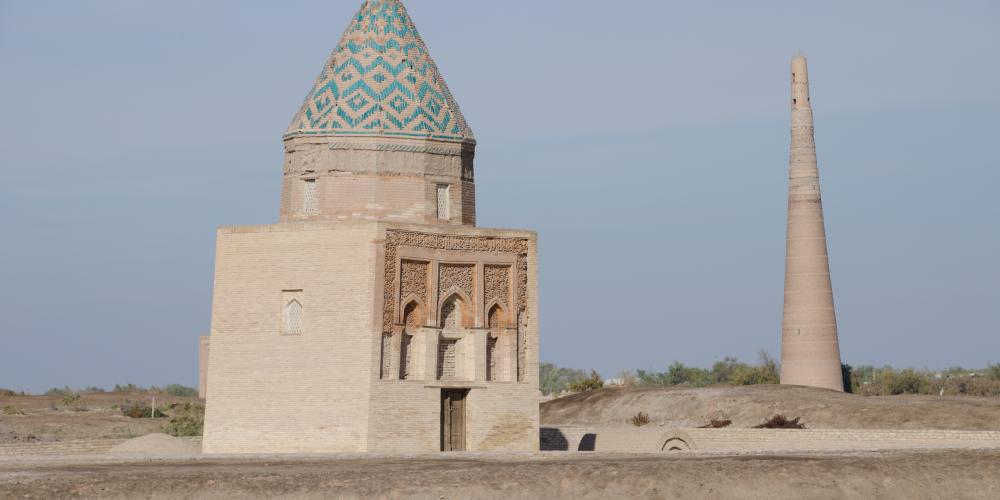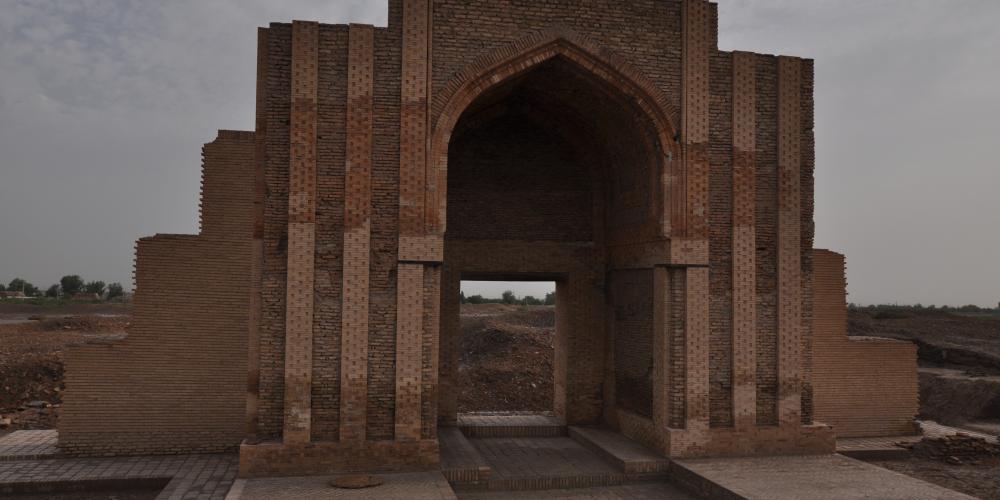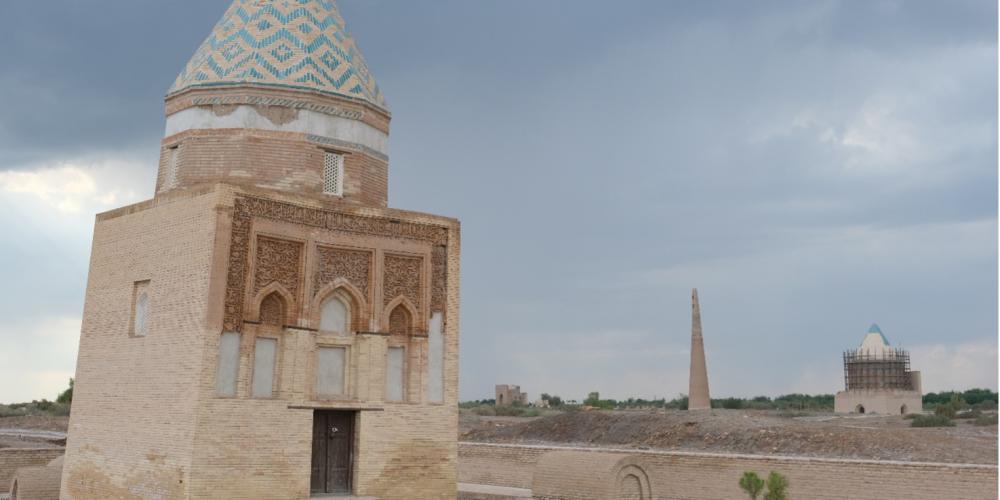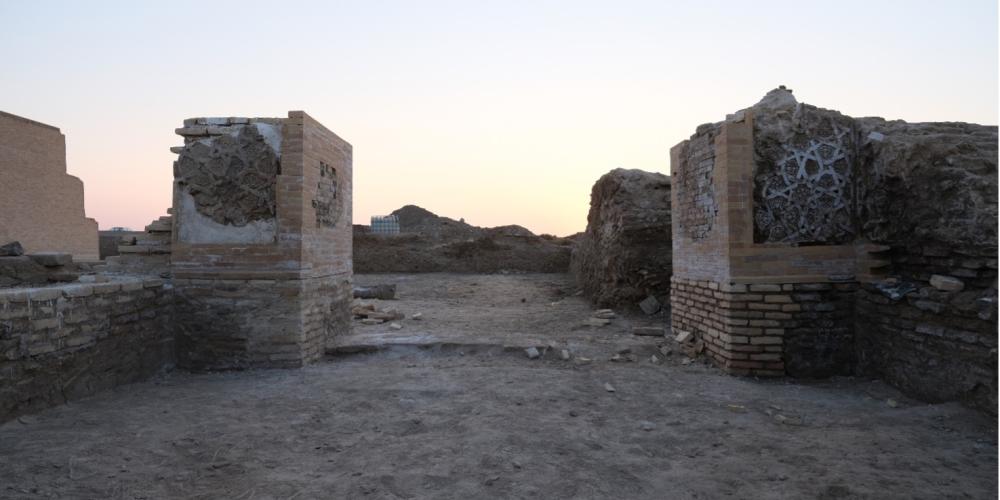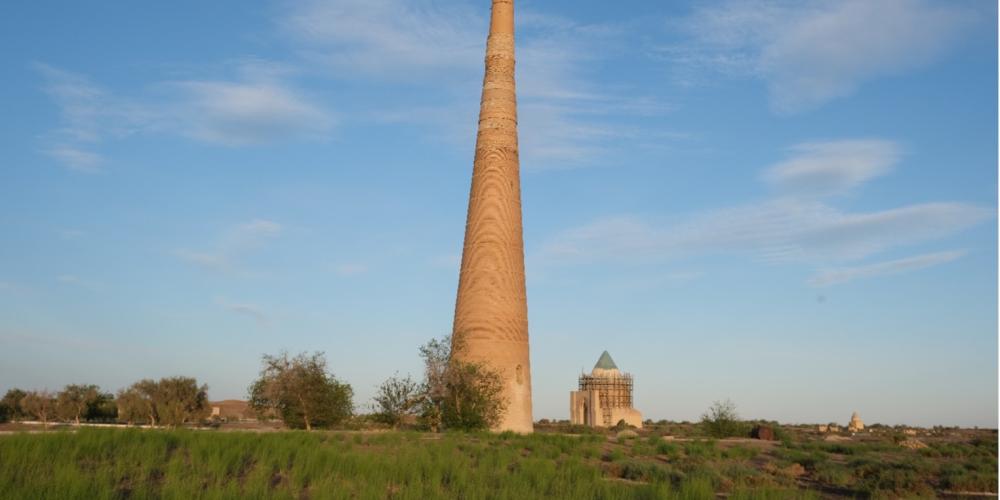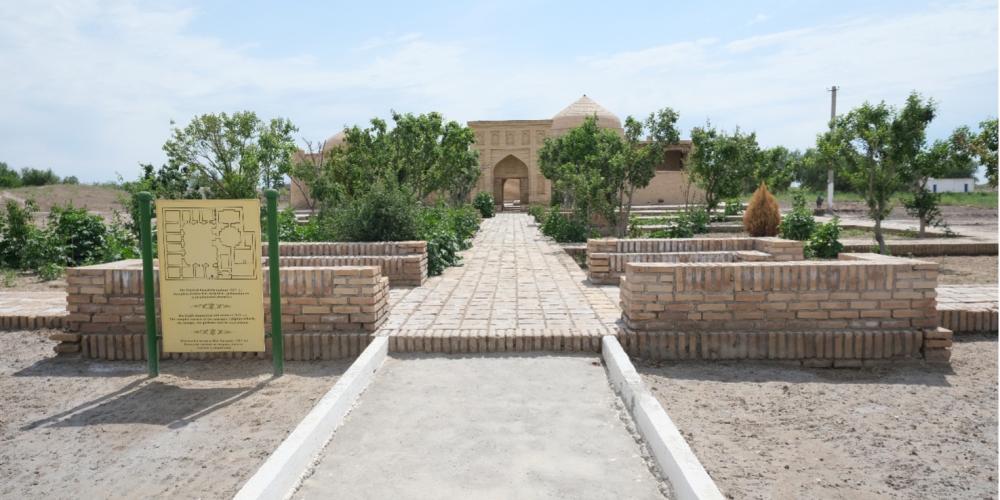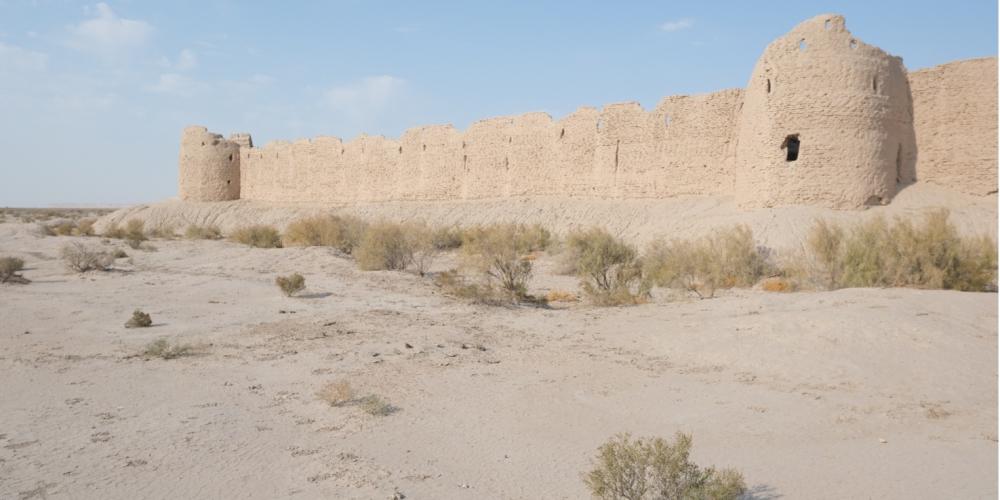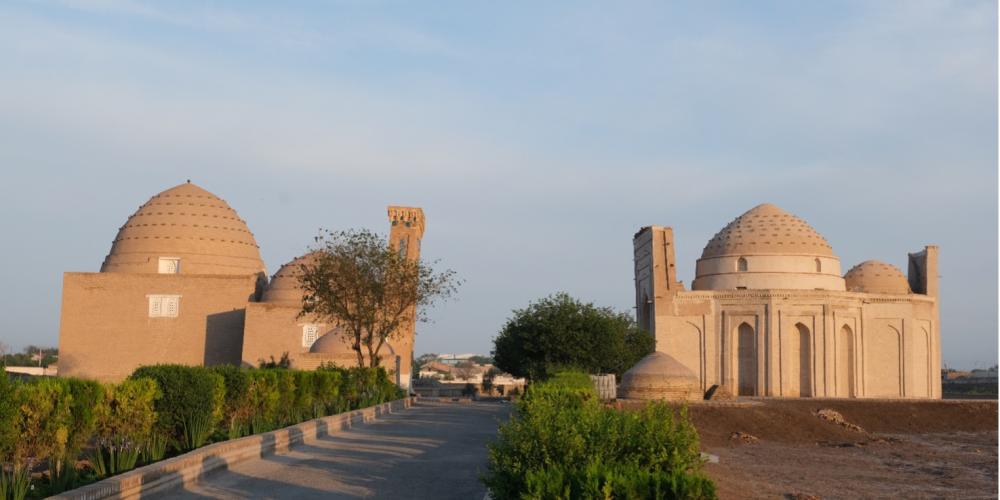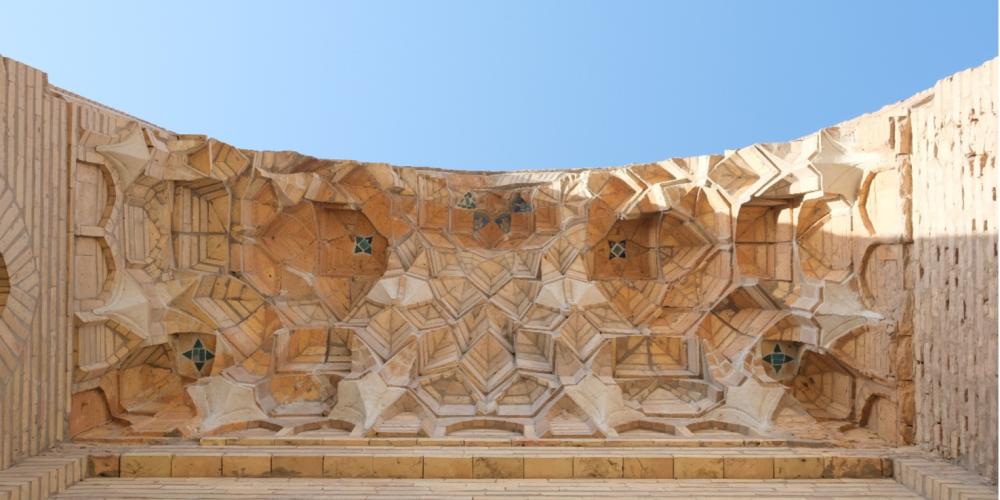Kunya-Urgench

This collection of historic buildings within what is now a small town in the northwest of the country gives visitors the chance to take a deeper dive into life on the Silk Road. A time-capsule that magnificently represents several major aspects of local culture from the 11th to the 16th century, you can trace the different periods of heritage in the buildings.
Designs slowly changed over time as new empires influenced the rulers of Kunya-Urgench, and the different construction materials show a shift in architectural thinking. While some monuments are accompanied by basic construction of clay and brick with little design, others have added decorative elements, such as colourful, window-like patterns that follow the circular cone or sphere-shaped domes.
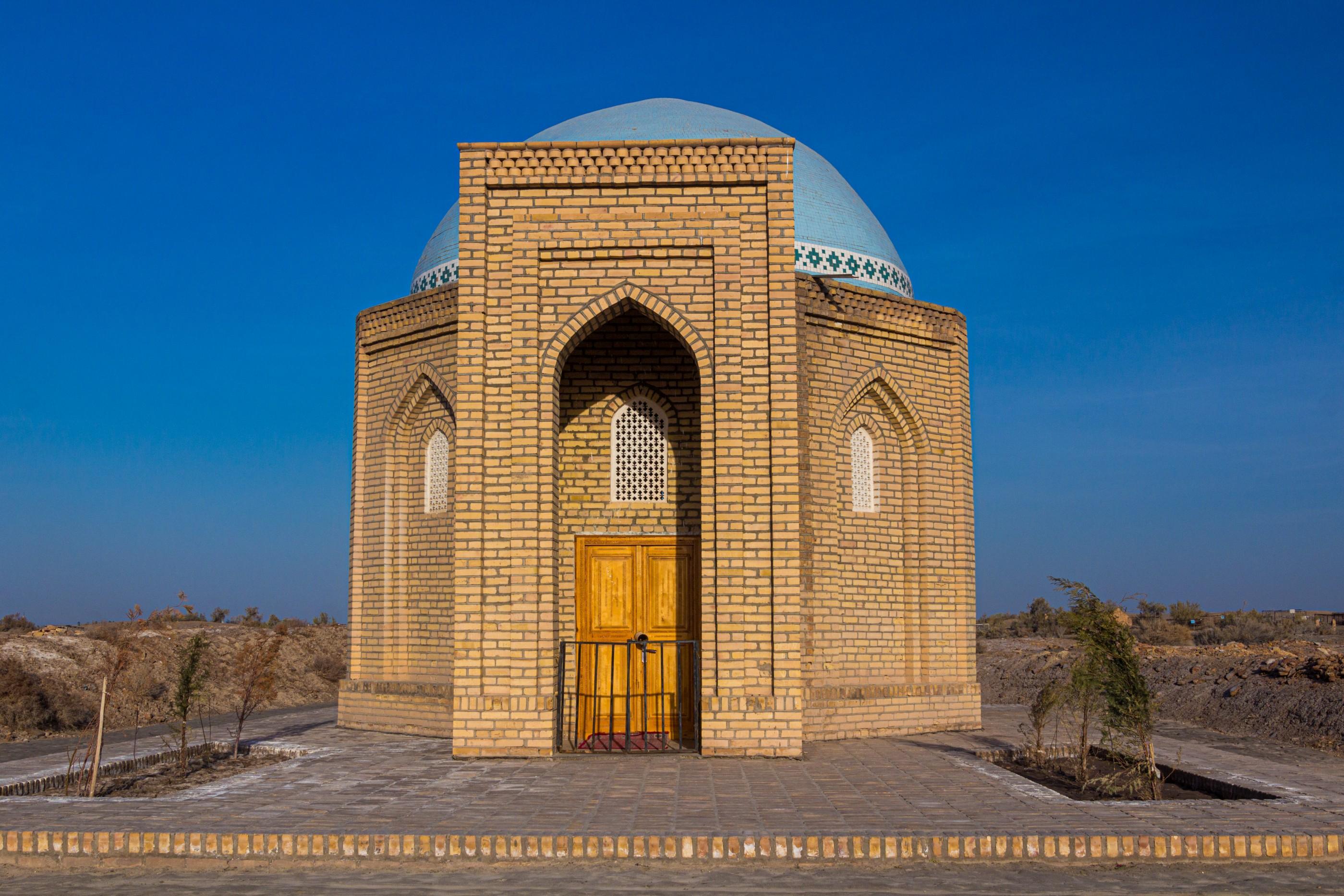
What we also see in the buildings at the site is a representation of the diverse collection of people that passed through Kunya-Urgench on their Silk Road journeys, sharing their culture and the artistic styles they picked up along the way. The designs here show influences from several Central Asian countries, as well as Islamic influences from places like Iran and Afghanistan. Some of the remaining tile work decorating the monuments is of particular note.
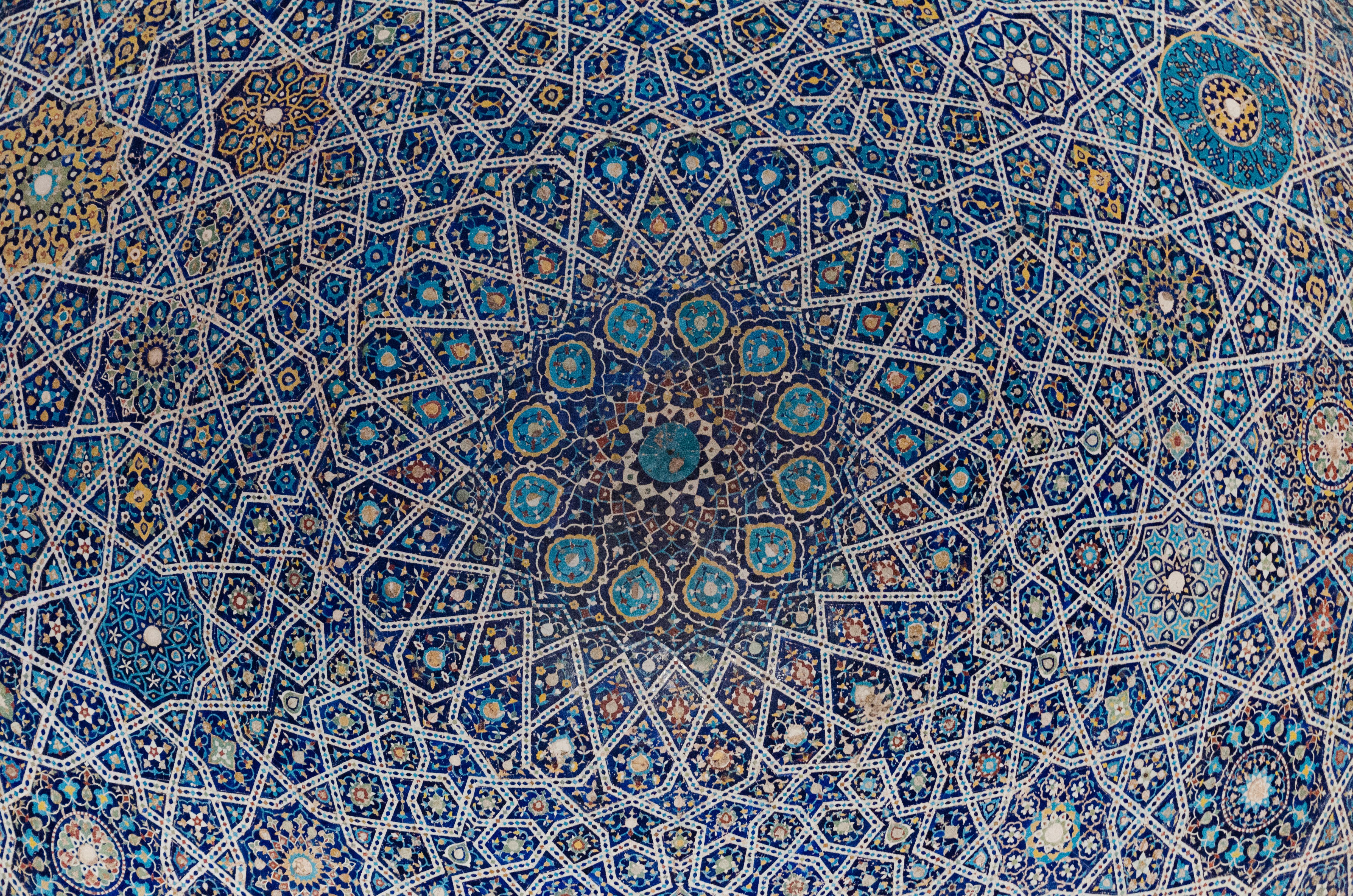
History & Today
This site’s history has been not only influential, but also valiant in how it has withstood the pressures of time. Having been invaded and destroyed by both Gengis Khan and the Turmids’ conquests (1221-1388), it has managed to be rebuilt twice and stood proud as the capital of the Khwarazm region following its second invasion. The site’s use during this era was mostly for trading and worship, since the monuments and location of the site had an Islamic focus, such as the mosque and minaret that accompany the local architecture.

On top of these uses was also the addition of a common pilgrimage site. Stones stacked on top of each other can be found near the site, which are placed along the trail to signify that you are on the right track to Kunya Urgench’s somewhat distant location. A mound of graves is also not too far from the monuments, with the burial spots signifying not only the people of Ancient Kunya-Urgench’s sacrifice to hold off the Mongolian invaders, but also that many Muslim saints and figures are buried at this location, with claims the prophet Mohammed is among them.
![The Caranvanserai Gate served as an entrance to Kunya Urgench for Silk Road merchants. ] (https://cdn.elebase.io/173fe953-8a63-4a8a-8ca3-1bacb56d78a5/868bc724-b617-48df-9ecd-628b90f40f69-kunyaaa.jpg)
One of the most popular attractions of Kunya Urgench today is the Mausoleum of Turabek Khanym, which is the largest monument at the site. What makes it comparable to other models and designs of the more detailed monuments is the inner mosaic that is included in the mausoleum, which has been well maintained over the last several centuries. Many of the monuments follow the similar scattered blue pattern but in slightly different tones, particularly near the archways and on top of the mausoleum. Leading into the further religious significance of this site is the 60-metre-high minaret, which is one of the highest monuments in Central Asia.
How to get there
Visitors will typically base themselves in the modern regional capital city of Dashoguz just 95 kilometres from Kunya Urgench, which has several suitable hotel and lodging facilities that visitors can choose from.
How to visit
There are tour websites that cover both a tour and transportation between each monument, which are priced around US$250 for an individual traveller. For every additional traveller, additional costs are reduced by US$50. It is highly recommended to book a tour and a guide for reliable transportation and local knowledge.
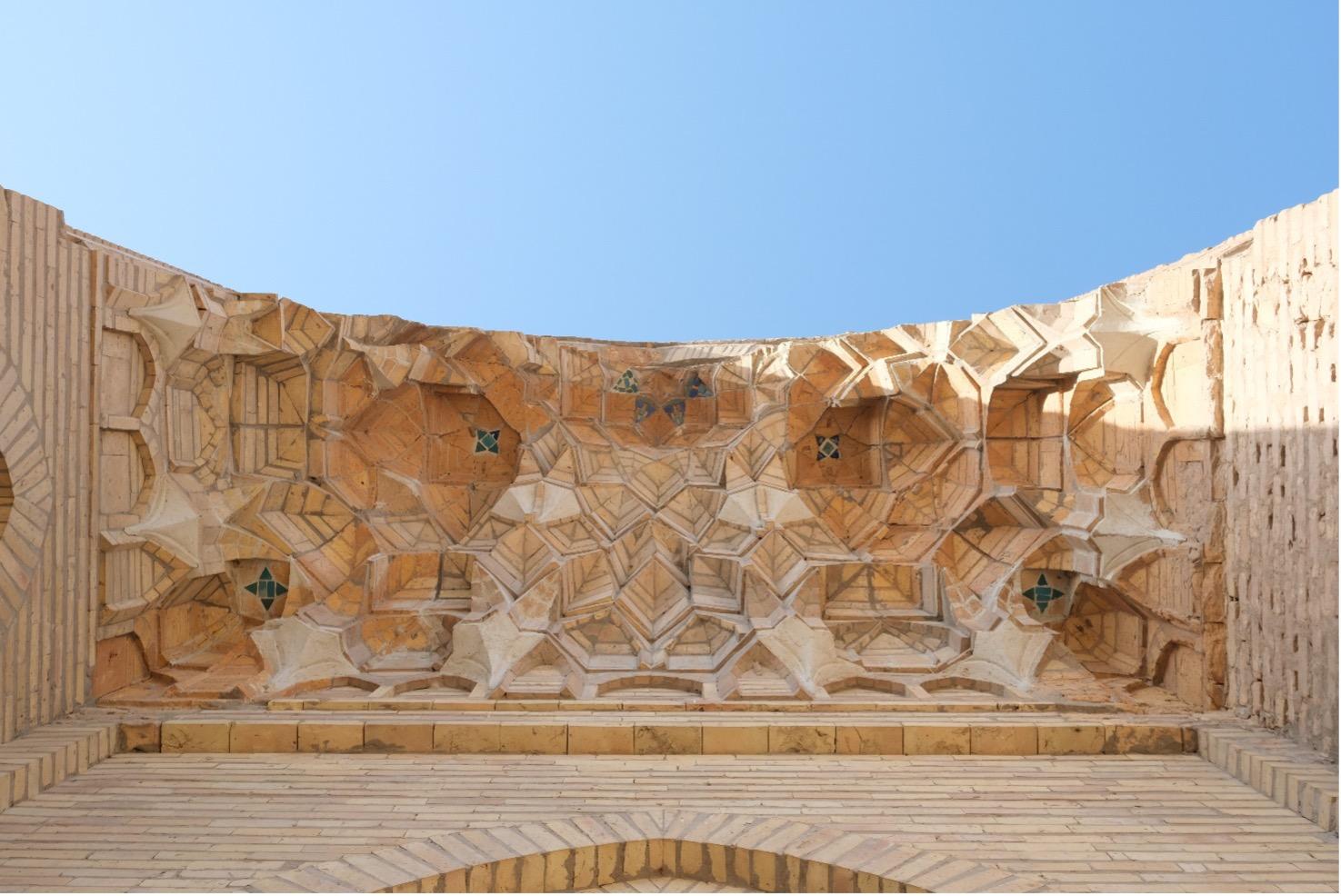
The monuments at Kunya-Urgench contribute to one of the most significant architectural sites standing in present-day Turkmenistan. As you explore the site, you'll find remarkable buildings like the Turabek-Khanum Mausoleum, with an octagonal floor plan and a dome of delicate blue and white decoration, and the Kutlug-Timur Minaret soaring to a height of 60 metres above the old city. Smaller and intricately decorated mausoleums in the northern part of town are the resting places of distinguished historical figures, and a 20th-century mosque has been converted into a museum for visitors.
Sights and Attractions recommended by the locals
Kunya-Urgench
When to visit
The best time to visit Turkmenistan is between March and June or September and November. The peak of summer can get very hot in Kunya Urgench, and the region is known for its ery cold winters.
When visiting the sites, there is a $12 fee for entry (21 manat). It is recommended that you get a tour that can drive you around the site, since there is a considerable distance between each of the monuments

